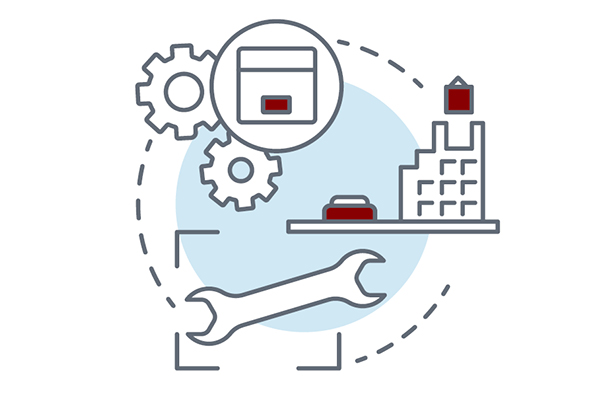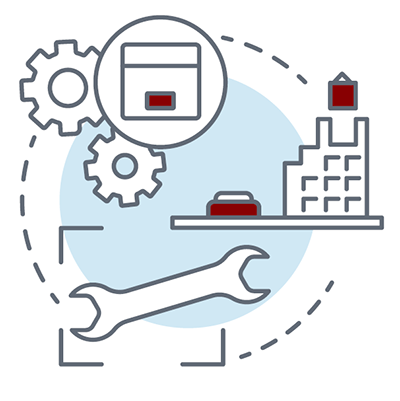eCommerce Pick Aisle Replenishment

This is Chapter 6 of 13 in our eBook on eCommerce Fulfillment for 3PL Warehouses. See the link below to download the full ebook
With the configuration of the pick aisle now complete, there needs to be a plan for the flow of products from bulk storage to the pick aisle. This process is called Replenishment. The timing and exactness of replenishment is key. Replenish too early or too much and there is wasted space which leads to inefficient storage usage over time. Replenish too little or too late and order fulfillment can grind to a halt. The pick aisle should be designed to handle an entire shift’s worth of picking, so analyzing the average and peak demand for orders to ensure no stockouts occur is important when first designing the pick aisle slots.
The minimum quantity required before triggering a replenishment is called the Safety Stock. Safety Stock is determined by taking into account the lead time to replenish the pick bin, and the average demand over that lead time. If it takes 2 hours to trigger and complete a replenishment run, and the average demand for an item is 3 pieces per hour, then the safety stock for that item should be set to 6 units, upon which the replenishment is triggered for that item.

Top-Off Replenishment looks at each pick location’s maximum quantity and assigns the replenishment of the product up to that maximum. This is typically run at the end of each shift, the beginning of each shift, or the end of the day. This prepares the pick aisle for the next shift or the next day of picking. Since the replenishment plan is only allocating the exact quantity to replenish up to the pick aisle bin maximum, partial quantities of the product may be left behind in the Bulk storage location.
Fixed Replenishment looks at the quantity in each pick location and only generates a replenishment request if the pick bin has one below the minimum set for the item. The system will then request a fixed quantity for replenishment, such as one full case of product, to replenish the bin location. Fixed replenishment is very similar to topoff replenishment, except where top-off replenishment will break cases or pallets to ensure the pick aisle is kept at maximum, a fixed replenishment will only move full cases or pallets. By design, a fixed replenishment would be more efficient for those doing the replenishment at the cost of potential stock-outs in the pick aisle. Because fixed replenishments are more efficient for those doing the movements of bulk to pick aisle, they can sometimes be executed on-demand during a shift in addition to the traditional replenishment at the beginning or end.
Demand Replenishment is determined by looking at the upcoming known orders for a time period and calculating the amount to replenish the pick aisle to have enough to fulfill all the orders. Demand replenishment can be done similar to the top-off method where the exact amount is picked, or similar to fixed, the demand replenishment can round up to the nearest case or pallet. Since the demand replenishment is aimed at fulfilling a set of orders, it needs to be completed before the picking of those orders begins.
Batch Replenishment is the plan to move just enough product from bulk to the pick aisle to fulfill a single batch of orders. Unlike demand replenishment, batch replenishment does not look at orders over a given time, but only at a single batch and the quantity picked matches the quantity required for the orders exactly. The timing of a batch replenishment is usually done immediately before the orders are packed and shipped, however, batch replenishment can also be done as a way to keep the pick aisle stocked, but replenishing what is being depleted concurrent with the packing.
Top-off or fixed replenishments are ideal for fulfillment operations that need to maximize the efficiency in the packing station, usually due to a high velocity and high variability of orders. Batch or demand replenishment may be the preferred method when dealing with lower variability, or batches of orders that are easier to plan out a day ahead.
Feel free to click here to access the download page for the full eBook or check back as we post regularly.
